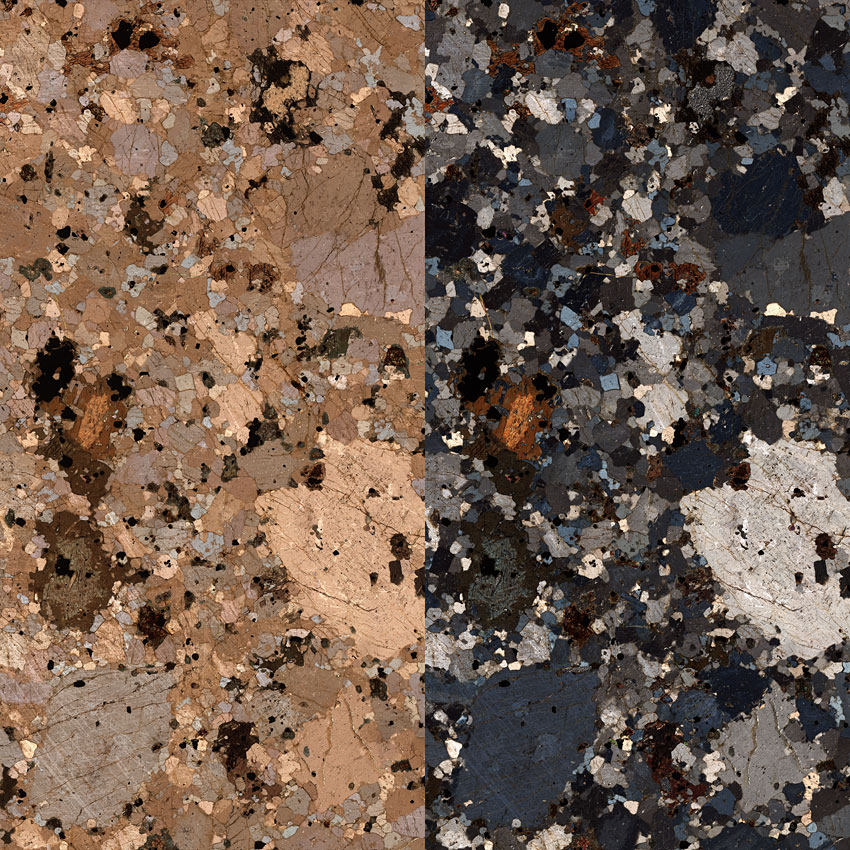 Some material, like the crystals in this granite sample, is known as birefringent, meaning it has two indexes of refraction so the speed light passes through the material depends on its angle of vibration. If you pass polarized light through this material, an odd thing happens—the material divides the light into two perpendicular vibrating rays. Because the rays have two orientations, they move through the material at two different speeds. If the exiting light passes through a second polarizer, the two rays are combined and the difference in their speed creates either constructive or destructive interference, resulting in changes in brightness and color. On the left is a simple brightfield image of a thin section of granite. The right is a polarized image of the same sample. Click on the image for a larger view.
Some material, like the crystals in this granite sample, is known as birefringent, meaning it has two indexes of refraction so the speed light passes through the material depends on its angle of vibration. If you pass polarized light through this material, an odd thing happens—the material divides the light into two perpendicular vibrating rays. Because the rays have two orientations, they move through the material at two different speeds. If the exiting light passes through a second polarizer, the two rays are combined and the difference in their speed creates either constructive or destructive interference, resulting in changes in brightness and color. On the left is a simple brightfield image of a thin section of granite. The right is a polarized image of the same sample. Click on the image for a larger view.
Hakusan Creation
An Artist-run Publisher
